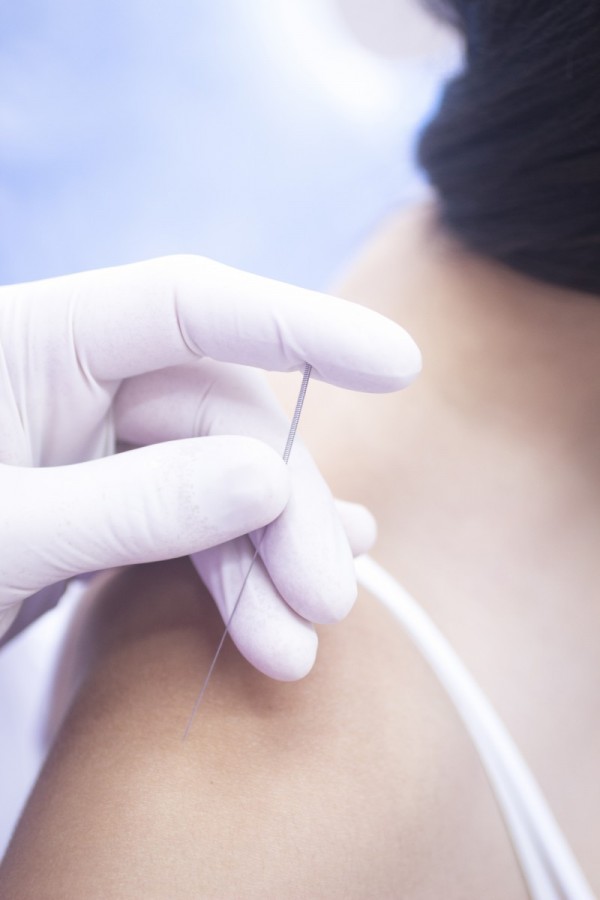What is dry needling?
Dry needling is a technique which involves the insertion of a single use, sterile, acupuncture needle into a myofascial (muscular) trigger point. A trigger point is a tight band within a muscle which can cause and contribute to pain within the body. Research has shown that biochemical changes occur in these trigger points and that the insertion of the needle reverses these biochemical changes, which results in reduced pain.
Which conditions can be treated with dry needling?
Dry needling can be beneficial in the treatment of several musculoskeletal problems. Below is a list of conditions that can be treated using dry needling:
• Back and neck pain
• Cervicogenic headache
• Shoulder impingement or rotator cuff injuries
• Pelvic pain
• Buttock and leg pain (including sciatica)
• Muscle strains (e.g. hamstring strain)
• Knee pain
• Calf tightness/cramps
• Achilles tendon pain
What is the difference between dry needling and acupuncture?
Dry needling and acupuncture use the same type of needles, however, different techniques are utilised. Acupuncture is a form of alternative medicine and a key component of traditional Chinese medicine involving thin needles inserted into the body at acupuncture points. Dry needling is based upon Western medicine principles and involves the insertion of thin needles into trigger points. These trigger points are different to traditional acupuncture points.
How does dry needling work?
Research studies have shown that inserting needles into trigger points causes biochemical changes which alleviate pain. For dry needling to be successful it is essential that a local “twitch” response is elicited when the needle is inserted into the myofascial trigger point.
Is it painful?
Upon insertion of the needle into the skin you may feel a small pin prick. Once the local twitch response is elicited the patient may experience a brief painful reaction. Patients often describe this painful reaction as a cramping sensation. It is important to remember that a local twitch response is necessary for a therapeutic effect to occur and therefore it is a desirable reaction.
Are there any side effects?
After dry needling it is common to experience some post treatment soreness. This soreness can last from 30 minutes to 2 days. Once this pain has subsided the patient should experience an improvement in their initial symptoms.
Are the needles sterile?
Yes. We only use sterile, single use, disposable needles.
Are there any reasons why I should not have dry-needling?
The following people should not have dry needling:
• People who are on blood thinning medication
• Those who have a history of epilepsy
• Women who are in their first trimester of pregnancy
What can I do after treatment?
Your physiotherapist will advise you to use heat after treatment to help reduce any post treatment soreness. Dry needling will be combined with other treatment techniques such as manual therapy and your physiotherapist will advise you on the best exercises to perform in conjunction with your treatment.
Have all physiotherapists undergone dry needling training?
Dry needling is currently not part of the physiotherapy undergraduate degree. It is a post graduate qualification. Here at IONA Physiotherapy, Aileen has undertaken several dry needling courses. If you would like to book an appointment with Aileen please phone (01) 7979545.


